Search
Did you mean: The Dagda?
Search Results

Image
Fragment of a Vessel from Khafajah
This fragment was part of a vessel made of solid greenstone. The surviving segment shows a multitude of exotic animals and birds in addition to a hero, flanked by two animals (lions?), standing before a temple facade. Probably, this scene...
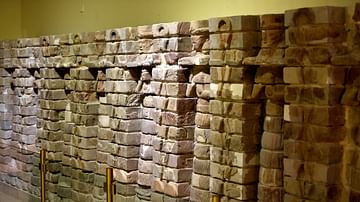
Image
Facade of Inanna Temple from Uruk at the Iraq Museum
This is part of the facade of the temple of goddess Inanna at Uruk (modern-day Warka, southern Iraq) and is made of bricks. There are standing male and female deities in alternating niches. Both hold a vase, pouring water in double streams...
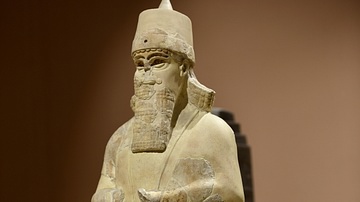
Image
Statue of Shalmaneser III from Nimrud
This statue represents Shalmaneser III (reigned 858-824 BCE) and was found by a peasant accidentally in the early spring of 1956. It was badly fragmented at the south-east corner of Nimrud city wall, at the foot of the acropolis. The statue's...
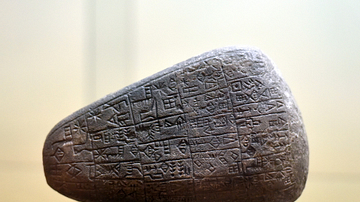
Image
Stone Pebble of Prince Eannatum of Lagash
A variety of pebbles, clay tablets, and plaques were found at the ancient city of Lagash and girsu. The cuneiform inscriptions mention on them the name of Eannatum, prince and ruler of Lagash. The narration usually states that he was given...
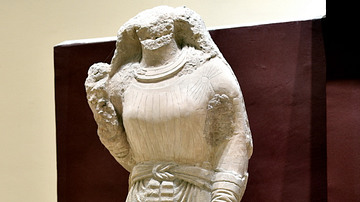
Image
Statue of Qimi Bin Abdsamiyah
Qimi Bin Abdsamiyah was probably a musician and/or a singer at the 5th temple in Hatra. Her father was a wine seller. Although the statue is now headless, it is considered one of the finest and precious finds from Hatra; her attire is very...
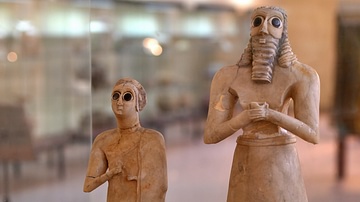
Image
Sumerian Worshipers from Tell Asmar at the Iraq Museum
Amongst the most famous statues from Tell Asmar are these two standing male and female ones, which were made of veined gypsum. They have a wide-eyed gaze and hold a cup with their hands. The man is bare-chested and wears a flounced kilt while...
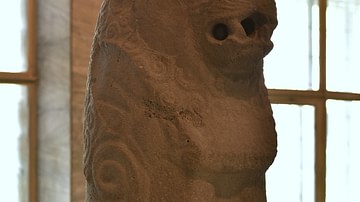
Image
Lion Statue from Eridu
One of a pair of lions which once stood at the gate of the ancient Sumerian city of Eridu (Tell Abu Shahrain) to guard the city's entrance. The lion was carved from black basalt. From Eridu, Southern Mesopotamia, in modern-day Iraq. Mid-3rd...
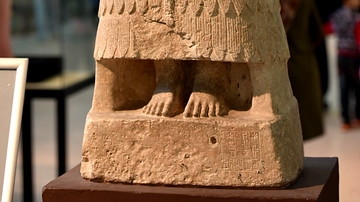
Image
Statue Dedicated to the God Ningishzida
The cuneiform inscription on the base of this headless states that the statue belongs to the king of "E-Kizal-Ki" (region or district), whose name was "Il-La", and who has dedicated this own statue to the god Ningishzida. Early Dynastic period...
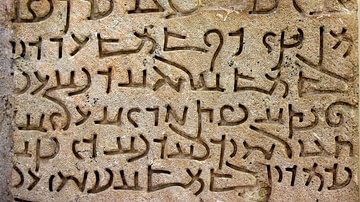
Image
Detail of Aramaic Inscription, Hatra
This limestone slab was inscribed with an Aramaic inscription. The name of the city of "Hatra" as the center of the region "Araba" appears. From the 11th temple at Hatra, Ninawa Governorate, Iraq. Parthian period, 1st to 3rd century CE. On...
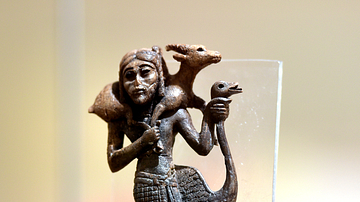
Image
Ivory Figure of Syrian Man with an Ostrich & Goat, Nimrud
This burned ivory figure, carved in the round, depicts a male figure carrying a goat on his shoulders and holding an ostrich by the neck. The depiction is very realistic; the beak of the ostrich is opened and the front wing is held upwards...